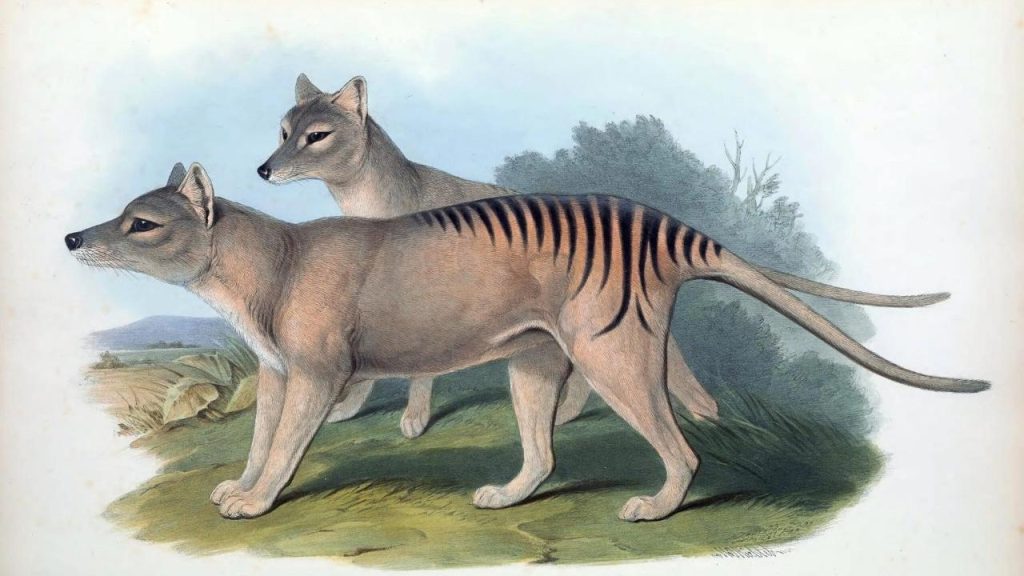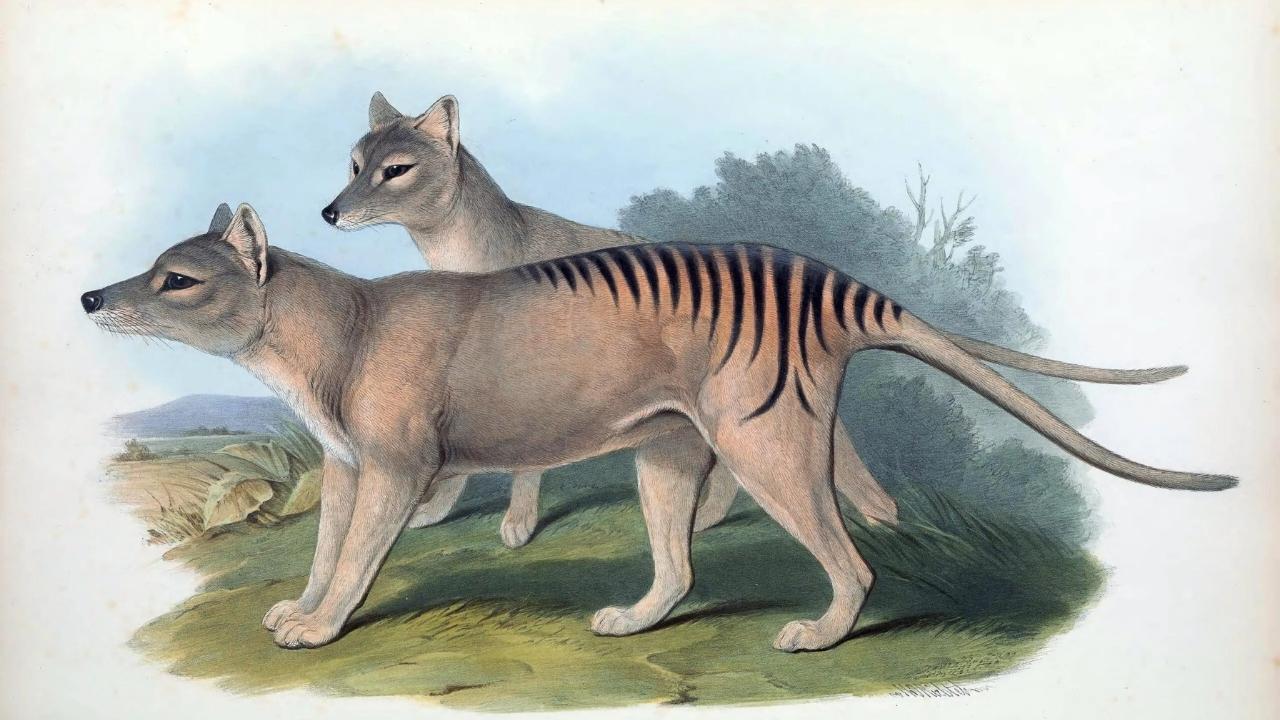The final chapter of the Tasmanian tiger extinction was written by European settlers, but a new landmark study reveals the story’s tragic beginning was drafted in its DNA tens of thousands of years earlier. Groundbreaking genomic analysis shows the thylacine suffered from extremely low genetic diversity, leaving it vulnerable long before it was hunted to extinction.

New Study Reveals the Tasmanian Tiger’s
| Key Finding | Detail |
| Genetic Vulnerability | The thylacine had one of the lowest levels of genetic diversity ever measured in a species, making it highly susceptible to disease. Nature Ecology & Evolution |
| Ancient Population Decline | This genetic weakness was not recent; it began between 70,000 and 120,000 years ago, likely due to a major climate cooling event. |
| Human Impact Was Final Blow | While genetically weak, the species was pushed to extinction by the intensive hunting bounty scheme introduced by European settlers in the 19th century. National Museum of Australia |
A Genetic Blueprint for Extinction
A comprehensive analysis of thylacine DNA has provided the first complete genetic blueprint of the extinct marsupial predator. Researchers led by Associate Professor Andrew Pask at the University of Melbourne sequenced the genome from a 106-year-old preserved pouch young. The findings, published in the peer-reviewed journal Nature Ecology & Evolution, confirmed the thylacine’s evolutionary position and exposed its critical genetic fragility.
The study revealed that the species possessed remarkably low genetic diversity, comparable to that of the endangered Tasmanian devil. “The genome has allowed us to confirm the thylacine’s place in the evolutionary tree,” said Pask in a university statement. This lack of genetic variation meant the population had a diminished capacity to adapt to environmental changes and fight off new diseases.
When individuals in a species are too genetically similar, harmful mutations can accumulate, and the population as a whole becomes more vulnerable. For the thylacine, this genetic ill-health was a pre-existing condition that made the final blow from human activities devastatingly effective.
The Story of the Tasmanian Tiger Extinction Predates Humans
For decades, the narrative of the Tasmanian tiger extinction focused almost exclusively on the bounty hunting programs of the 19th and early 20th centuries. While these actions were the direct cause of the species’ disappearance, the new research demonstrates the thylacine was already walking a genetic tightrope.
The team’s analysis suggests the population’s troubles began during a global cooling event that occurred between 70,000 and 120,000 years ago. This climatic shift appears to have created a “bottleneck” that severely reduced the thylacine population and its genetic resilience long before the arrival of the first humans in Australia.
Continental Pressures and Isolation
Following its mainland decline, the thylacine population became entirely isolated on the island of Tasmania about 14,000 years ago when rising sea levels separated it from continental Australia. On the mainland, the thylacine was likely outcompeted by the dingo, which was introduced several thousand years ago. In Tasmania, the isolated and already genetically compromised population survived, but it never fully recovered its genetic health.
This deep historical context is crucial for understanding the species’ rapid demise following European colonisation. It was not a robust species that was hunted to extinction; it was a species with an underlying vulnerability that had no defence against a new, systematic threat.

Implications for Conservation Biology and De-Extinction
The thylacine’s genetic story serves as a critical lesson for modern conservation biology. It highlights the profound danger that low genetic diversity poses to threatened species today, such as cheetahs and the Tasmanian devil. By understanding the thylacine’s genetic weaknesses, scientists can better model risks for living species and prioritise efforts to maintain genetic health in isolated populations.
Furthermore, the findings present significant challenges for those hoping to resurrect the thylacine through de-extinction science. Cloning a thylacine would mean resurrecting an animal with the same genetic flaws that contributed to its initial disappearance.
“Our research shows that the thylacine was in very poor genetic health,” Pask noted in an interview with the BBC. “This would be a major hurdle to re-establishing a healthy, wild population.” Any de-extinction effort would need to find ways to engineer genetic diversity into a resurrected population, a complex and ethically debated scientific challenge.
The last known thylacine died in captivity at the Hobart Zoo on 7 September 1936. Its story, once a straightforward tale of human-driven extinction, is now understood as a more complex tragedy, one written in its ancient DNA and sealed by modern human actions.
FAQs
1. What was the Tasmanian tiger?
The Tasmanian tiger, or thylacine (Thylacinus cynocephalus), was a large carnivorous marsupial. It was the largest of its kind in modern times, with a distinctive wolf-like head and tiger-like stripes on its lower back.
2. Why did the Tasmanian tiger go extinct?
Its extinction was caused by two primary factors. The species already had extremely low genetic diversity due to ancient climate events, making it vulnerable. The final cause was an intensive hunting campaign by European settlers in Tasmania, who incorrectly blamed the animal for preying on sheep.
3. What does low genetic diversity mean for a species?
Low genetic diversity means there is very little genetic difference between individuals in a population. This makes the species less able to adapt to environmental changes, such as new climates or diseases, and increases the risk of genetic disorders caused by inbreeding.
4. Could the Tasmanian tiger be brought back through de-extinction?
While scientists have successfully sequenced its genome, which is a crucial first step, bringing the thylacine back remains a major scientific challenge. This study shows any resurrected animal would carry the same genetic weaknesses that made it vulnerable, posing significant problems for creating a viable and healthy population.





